Driving the spectacular $106,000 Porsche 718 Spyder rearranged my consciousness
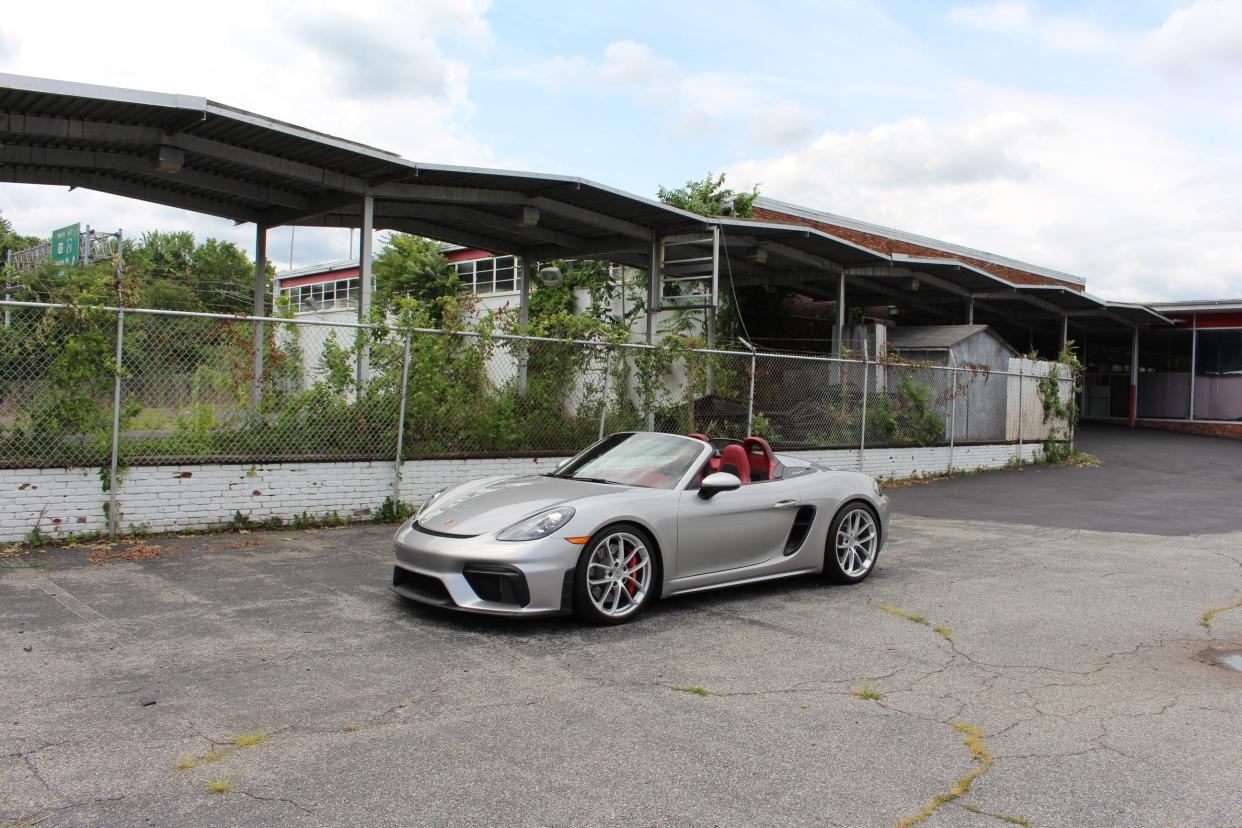
Matthew DeBord/Insider
I drove the glorious 2020 Porsche 718 Spyder, a high-performance convertible two-seater that goes for a well-optioned $105,780.
The Spyder has a new 414-horsepower flat-six engine that's devoid of turbochargers and, in my car, mated to a crisp six-speed manual transmission.
The Spyder traces it lineage to the open-air racers of the 1950s.
It isn't a practical car, but it is the best Porsche money can buy — and, for me, a ticket to happiness.
"The colors tremble and vibrate."
That's a line from the title poem in Frederick Seidel's 1998 collection "Going Fast," a work crammed with references to the motorcycles Seidel loves.
Speed is a combination of reality and perception — we understand it as it's happening — and on a motorbike, you'd better be processing what's going on and doing it with all available gray matter and muscle memory.
The colors don't tremble or vibrate quite as much in a car. In many cars, they're positively immobile. But as I'm not riding these days, I take what I can get from four-wheelers.
A few weeks ago, Porsche lent me a 718 Spyder, model year 2020. Over a week's time, I didn't just reacquaint myself with the trembling and the vibrating. I found some new colors.
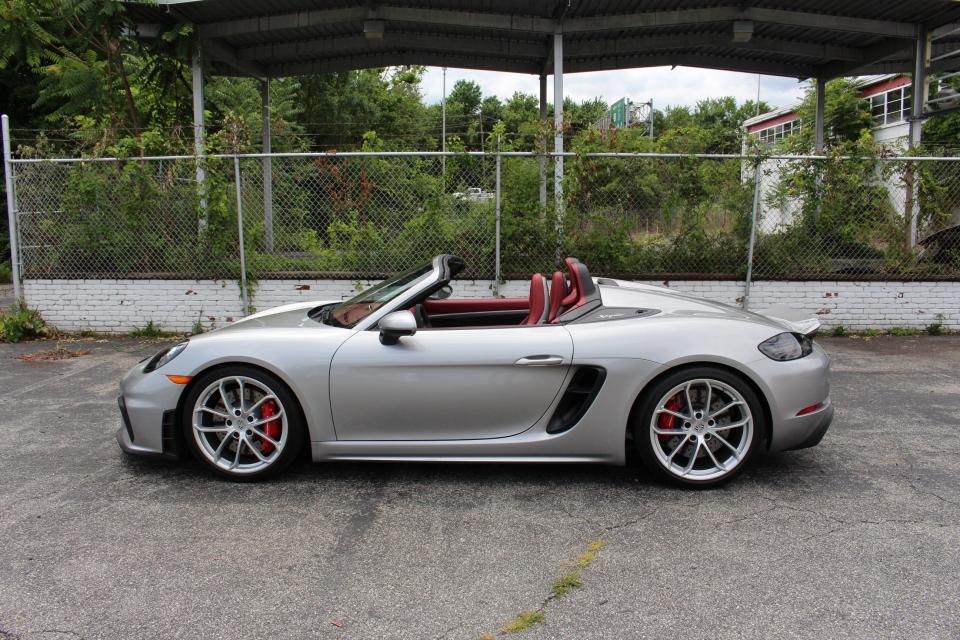
Matthew DeBord/Insider
I'm not going to show you what the Spyder looks like top up. Some folks might think the roadster looks cool with its sleek semi-automatic cloth roof, complete with winglets that evoke the flimsy covering of the roadster's heritage. But I don't.
The Spyder needs to live a largely top-down life, like its legendary antecedent. You know the car I'm talking about: "Little Bastard." James Dean's deathmobile, No. 130, a 1955 Porsche 550 that lost a tragic open-road encounter with 1950 Ford. Dean was 24. He'd barely had the car a week.
You can't not think about the rebel without a cause — his white V-neck T-shirt, the driving gloves, the cigarette, and that '55 Porsche at a California filling station in the iconic photo, Dean's last known living image — when you slip into the snug cockpit of the 2020 Spyder. Sixty-five years have changed nothing. (Well, airbags.) You're in a topless two-seater with a Porsche badge on the hood, engine behind your head, road beneath your 20-inch alloy wheels.
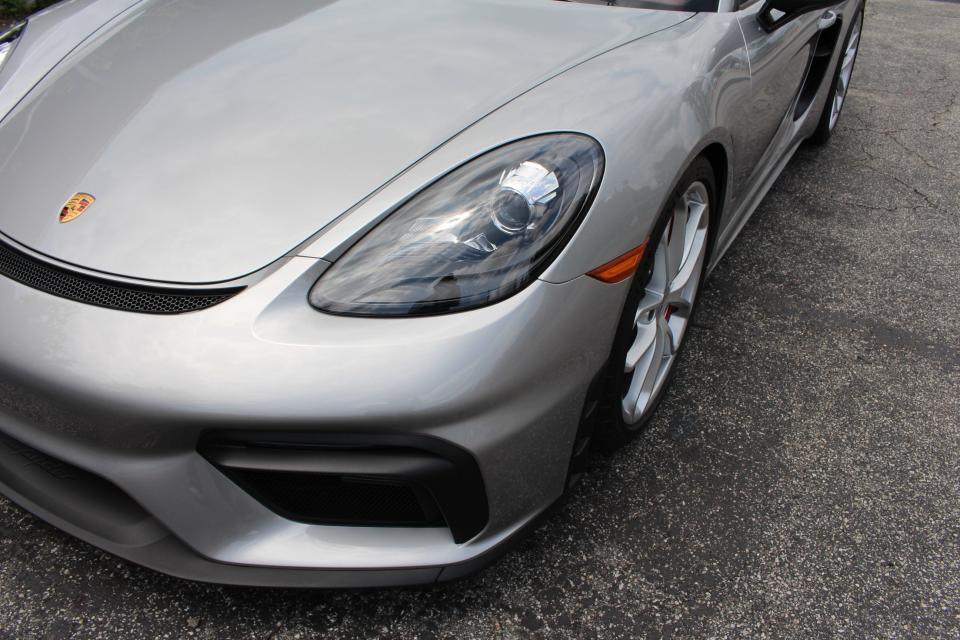
Matthew DeBord/Insider
What you don't have is a flat-four engine making just over 100 horsepower. In fact, you have a flat-six, sans turbos of any sort, a 4.0-liter mill producing 414 horsepower with 309 pound-feet of torque and — get this, get it good — a redline at 8,000 rpm. (The 2021 911 Carrera S, by contrast, tops out a 7,500, with its 3.0-liter six.)
Yessir! Beneath my left foot was a crisply responsive clutch pedal. Beneath my right hand, a six-speed stick. But I really didn't need anything past three. I'm not sure what anybody is going to do with the forthcoming dual-clutch transmission and its seven. Perhaps shave a few tenths off the Porsche-claimed zero to 60 mph time of 4.2 seconds. (But why? I got to 60 mph in what I thought was about 3.5 seconds, and I was barely into third gear.)
The open air, the open road, the power and the power and the power, and I haven't even gotten to the exhaust note yet. The ever-present sense that the exquisite neutrality of the Spyder's balance could send one off into new adventures in either over- or understeer. The unsettling dynamics of this ... well, this little bastard.
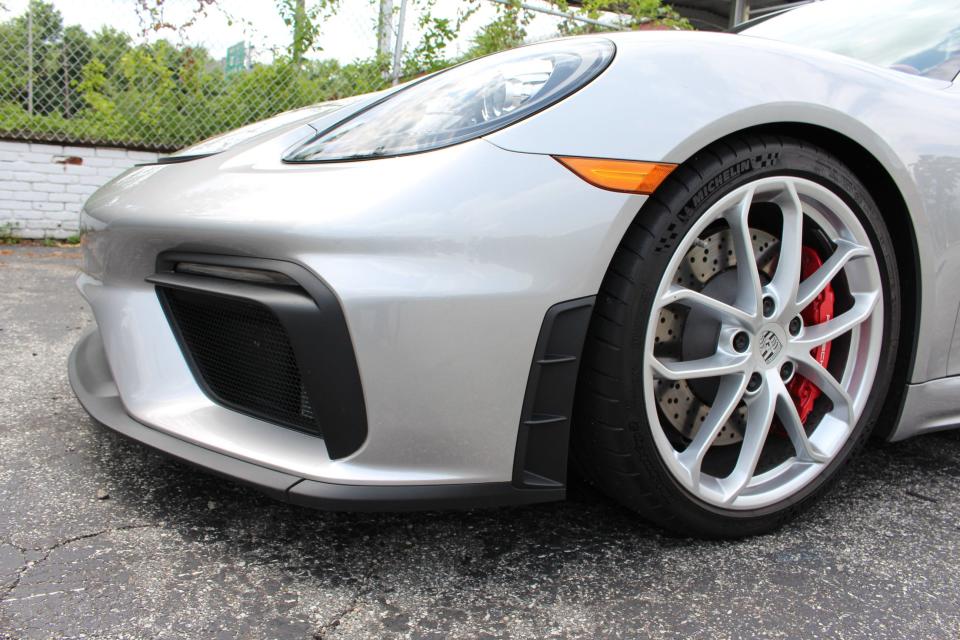
Matthew DeBord/Insider
Heck, I'm a 911 fella through and through. Never have I fallen in line for the Boxsters and Caymans, although I've had my fun with the midmounted turbo fours. I usually like less weight and power, to max out the feathery nature of a proper two-seater.
But the 2020 718 Spyder rearranged my consciousness, like something quick and compelling moving through space and time. This is a car that you dream about after the driving is done, then dream anew when the driving resumes, and before you know it, the driving and dreaming are the same thing.
The 718 Spyder has a stablemate: the GT4, hard-topped and inarguably more the genuine mid-engine race car in the Porsche paddock. For the hardcore competitor, a worthy set of wheels. For me, an extra $3,000, base, on the Spyder and for what? A stiffer architecture? I'd rather channel the late Sir Stirling Moss and have the wind in a grinning swirl around my head.
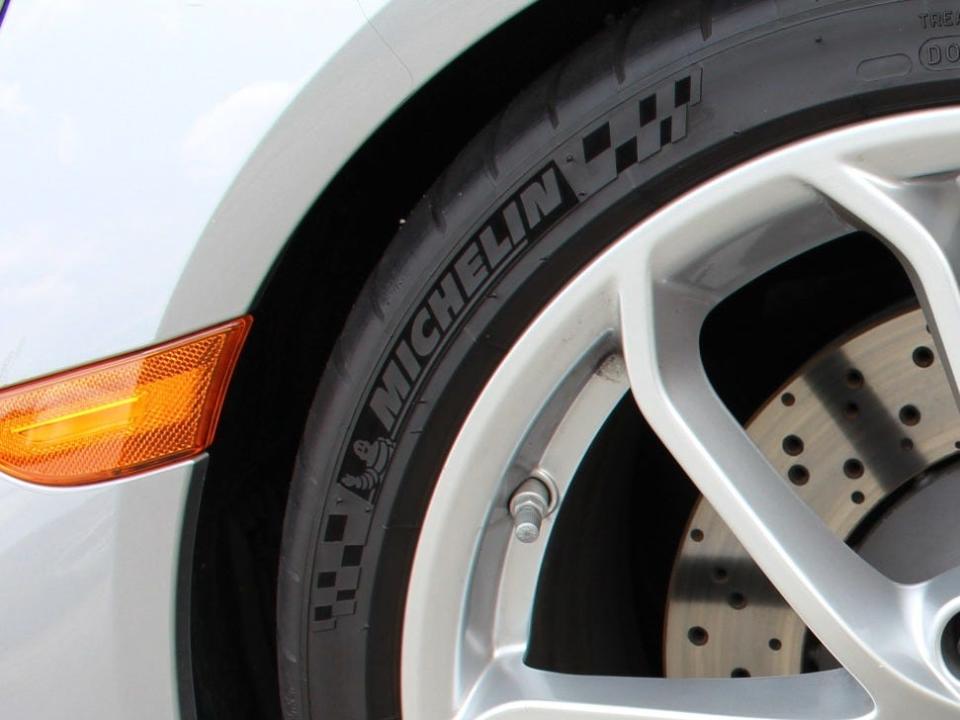
Matthew DeBord/Insider
Let's say I spent the $105,780 to make this Spyder my own. I don't think I'd bother putting the top up once I took it down. The process is borderline maddening. First, you flick a switch in the cabin, between the seats. The windows lower, and three latches disengage from the windshield. The rear hatch pops open. You then exit the car and reconfigure the winglet on either side, raising the hatch before folding, not without some effort, the top in a compartment behind the seats. Thump the hatch closed and the alfresco driving can commence.
Compared to this undertaking, which for me entailed some planning every time, with a Miata's sequence: drop windows, twist latch, throw soft-top back. The whole deal could be accomplished at a stoplight.
I didn't look forward to wrestling with the Spyder's roof, but with rain in the forecast, I had to grapple several times. (Putting it back up is even harder than dropping it.) But I do own a garage, which at the moment is crammed with suburban summertime gear. If it were up to me, I'd remove the top entirely and knock the weight down to 3,500 pounds. A gossamer car cover would be my new protection from the elements, and the Spyder would never even witness winter.
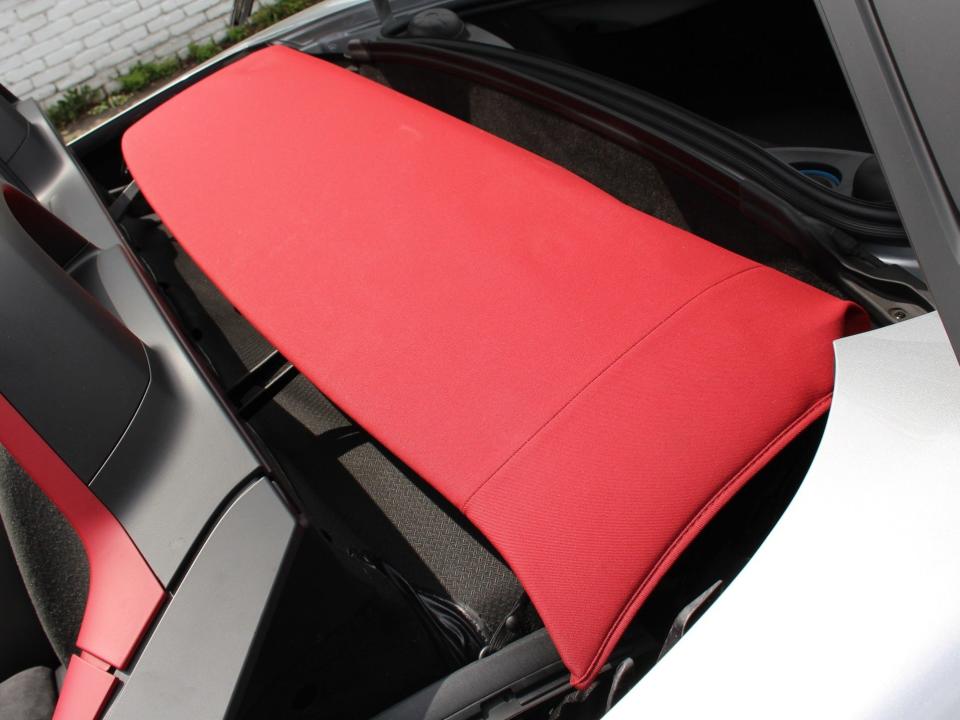
Matthew DeBord/Insider
Are Porsches beautiful? Well, no. They're actually sort of, um, ugly. Homely. The bug eyes, the awkward haunches, the endless aesthetic problem of the front end ... and the rear end ... and the sides ...
But Porsche sports cars are so magnificently engineered by the geniuses in Stuttgart that the visual offenses are forgiven as soon as the tires grab the tarmac. This is a tool. Who cares how it looks?
I do, but if I want an object of beauty, there's always the Aston Martin DB9. If I want to drive for my life, I'd take a 911. Or would I? The issue with the 911 is that because the rear-engine design is so profoundly flawed, Porsche designers have been innovating since the mid-1960s to solve the problem. They've succeeded so thoroughly that the 911 has lost some edge. One can push the machine harder than ever without fear of catastrophe, as I did when I recently tested the new Carrera 4S and Turbo S in rapid succession.
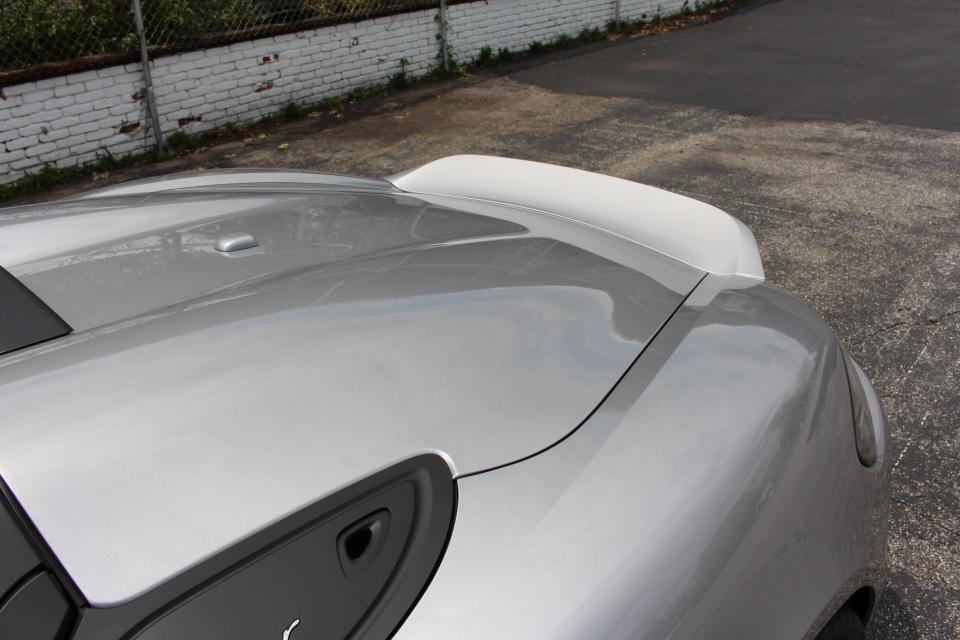
Matthew DeBord/Insider
The 911 shows you how to drive it. The car plots a course into the future and guides you to it; no vehicle fills me with more confidence. The Spyder, on the other hand, undermines my confidence, oh-so subtly. I could feel the grip ebbing whenever I got frisky. In my heart, I want this and want it badly from a rear-drive sports car, and I got it not too long ago from an Aston V8 Vantage. That was 503 hp with tail-happy slip, however, and it was sort of scary. (This is comparative; the 800 hp in a Dodge Challenger SRT Hellcat Redeye Widebody was flatly terrifying.)
The Spyder's 414 was easier to work with, the limit of what I can handle when it comes to throttle versus tire adhesion. In a word, exhilarating. In another, alive. In yet another, I'll admit, beautiful.
I drove the Spyder a lot, both because it's addictive to drive and because during the Northeaster summer you want top-down motoring into the night. New Jersey's legendary Garden State Parkway is a few minutes from my house, and I made for it with a certain native son's song lyrics in my head and a sense of guilt in my gut that I was taking to the thoroughfare in a German roadster, rather than an American muscle car.
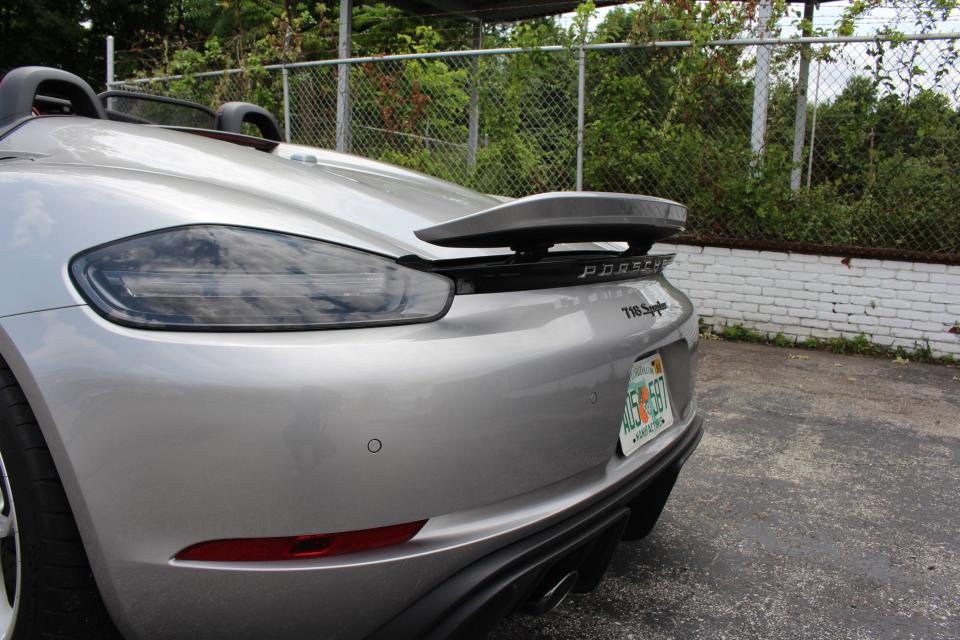
Matthew DeBord/Insider
Parkway journeys aren't the best use of the Spyder's talents, but they can get you to regions where the roads wind and wend, twist and bend. But we're not there just yet.
At high speed, the Spyder is perplexing. Thanks to that 8,000 rpm redline, which sits there on the tachometer, beckoning one to, you know, test it. Hammer the accelerator and observe the needle climb until the soulful huff of the flat six becomes, if not a scream, then a sort of throaty yowl. I wanted to throw the shifter into fifth, but the engine only needs second and (barely) third. The torque is so cussedly available after three snicks that you rapidly forget about downshifting for more pop and simply hang out around 4,000 or 5,000 rpm and grab speed whenever you want or need it.
The Spyder basically trifles with everything else on the road, save the odd Voodoo V8 Mustang, a flat-crank hellraiser that's actually a fine track-day choice, but that offers none of the Spyder's panache. In a GT350, the redline is 8,250 rpm, which I used to dismember a racetrack in Utah a few years back, without departing from third gear.
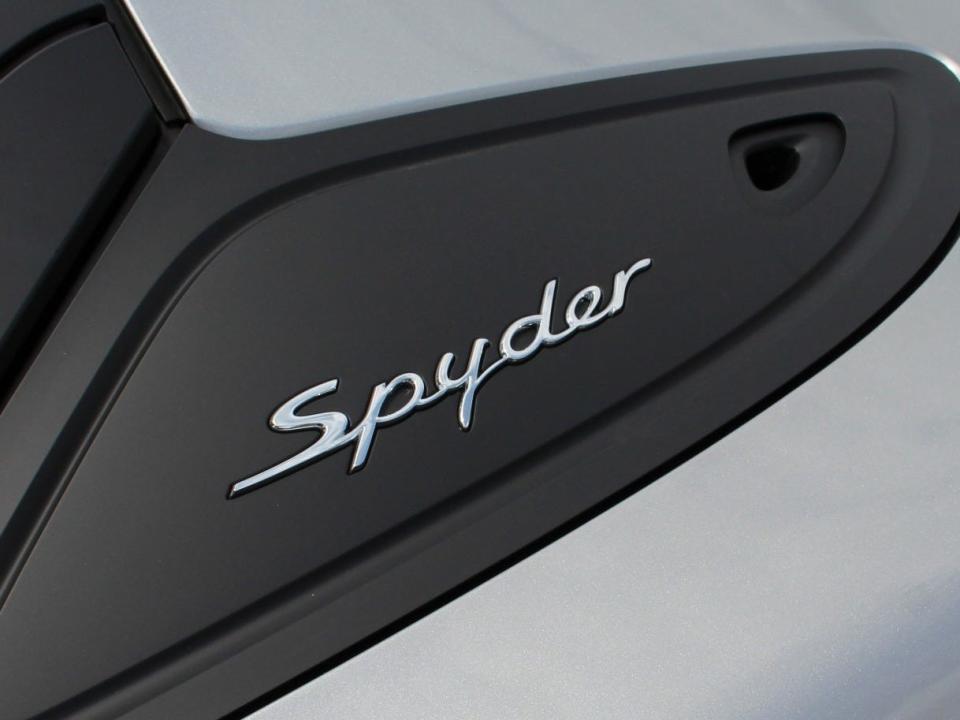
Matthew DeBord/Insider
The 718, therefore, is a steering-and-braking-at-speed experience. With the wheel light and flicky in the hands, the suspension ready for whatever I could throw at it, and the brakes providing the on-command stopping and four Michelin Pilot Sport Cup 2's providing the gripping, boredom is vanquished and troubles retreat.
The top speed is said to be 187 mph, at which point you might be able to use the retractable spoiler to add some useful downforce to the rear end, and count on the front aerodynamics to slip the airflow up and over the Spyder's smooth form, in the case of my tester wearing a sharp GT Silver Metallic paint job, the soft top cut from cloth the color of drying blood.
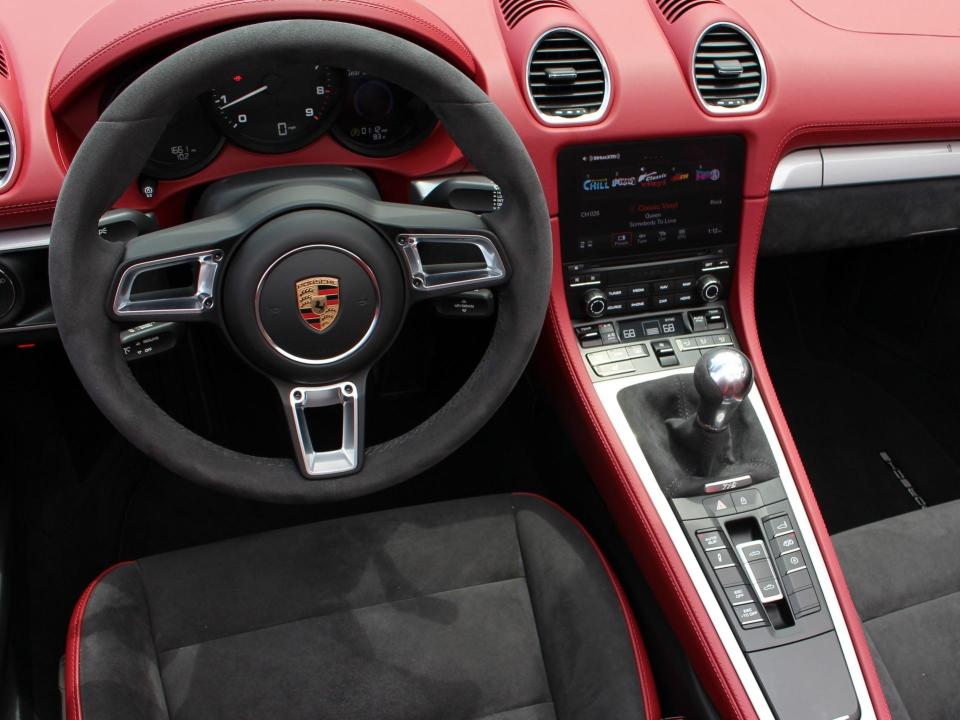
Matthew DeBord/Insider
The interior is premium yet purposeful. A "Bordeaux" red-and-black leather and Alcantara package adds almost $3,000 to the final damage, but in general the insides make few compromises. The Alcantara-clad wheel is intended for steering; it lacks the now typical multifunction array of buttons, switches, knobs, and dials.
The seats are snug, and the evidence of discipline around weight — mass is the enemy of speed and handling — is in the webbed pull-handle door releases and lack of storage. The woeful retractable cupholders, flimsy things that no fool would risk with a steaming latte, are pathetic but understandable. They're made of load-lightening plastic. When they inevitably break and you throw them into a rest-stop trash can, subtract another eight ounces from the Spyder's bulk.
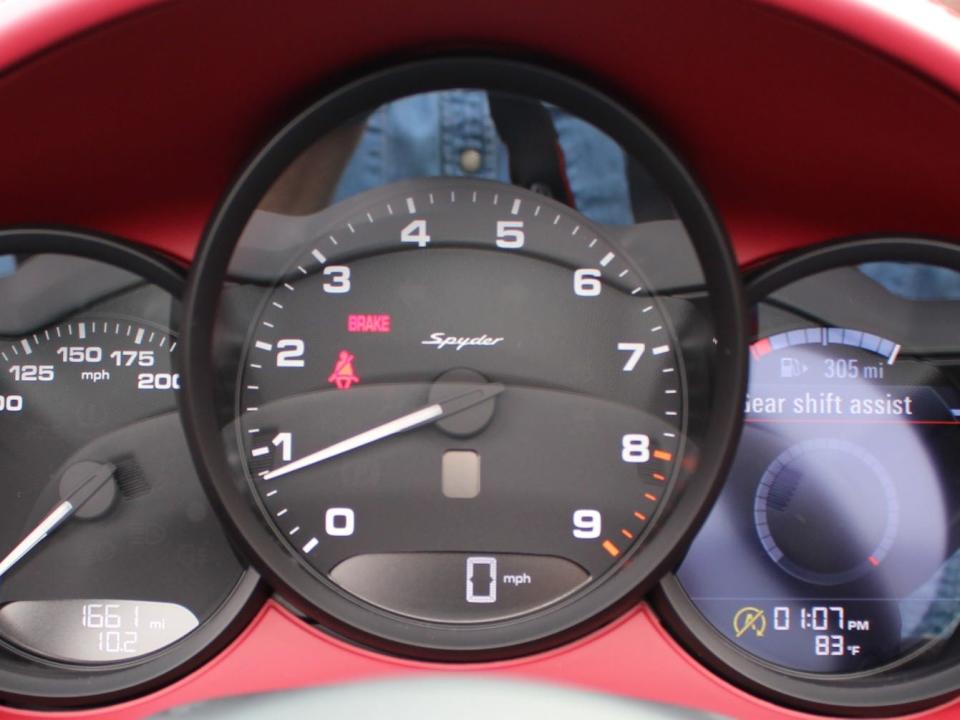
Matthew DeBord/Insider
The infotainment system, running on a modest touchscreen, is good for listening to music and provides GPS navigation, and it also enables the expected Bluetooth device pairing along with USB connectivity.
But the real joy of the Spyder is taking the opportunity to ignore the tech. Punch up the exhaust note and switch off the cylinder-deactivation features (which probably helps yield the fuel economy figures of 16 mph city/23 highway/19 combined), and with the top down, come on and feel the noise.
Seriously, you don't drop more than $100,000 ($96,300 base) on a ride like this if you want to fiddle with a touchscreen. Kudos to Porsche for installing infotainment. But it's a plus-$2,300 option. And I'd have been happy with a factory AM/FM and a folding roadmap.
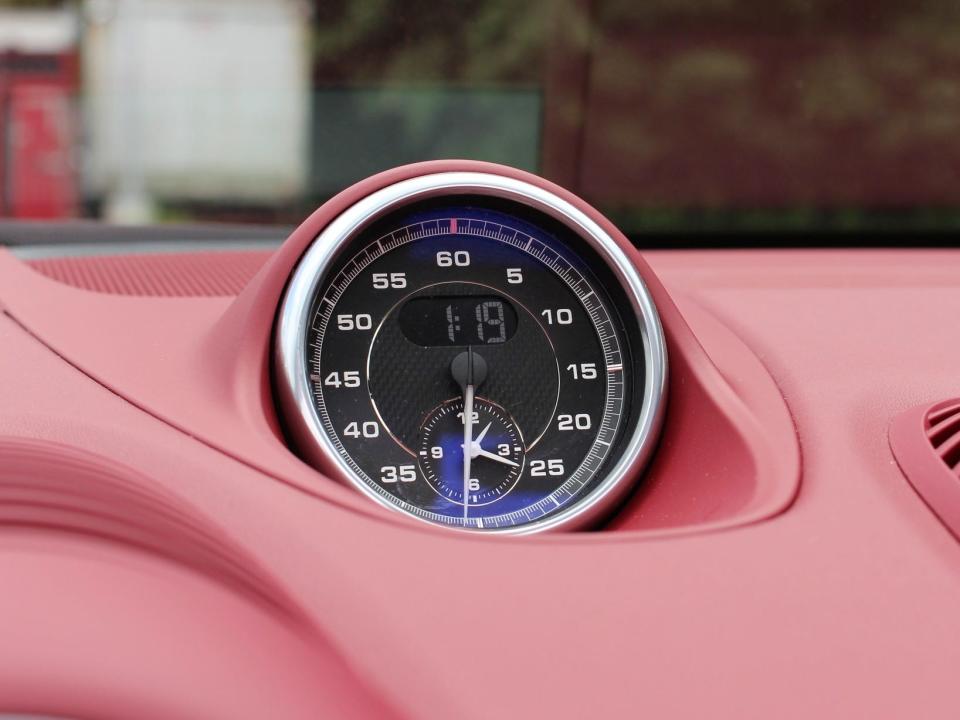
Matthew DeBord/Insider
Apart from the cupholders, I got my usual kicks from stuff like the "smoking package," a micro-lighter and ashtray that I estimated could hold the butts of exactly three Marlboros.
A chronograph occupies prime real estate in the middle of the Spyder's dash and would be helpful if clocking lap times. As it stands, for the Spyder's mainly trackless customers, it's like a nice wristwatch, adding some functional style to the cabin.
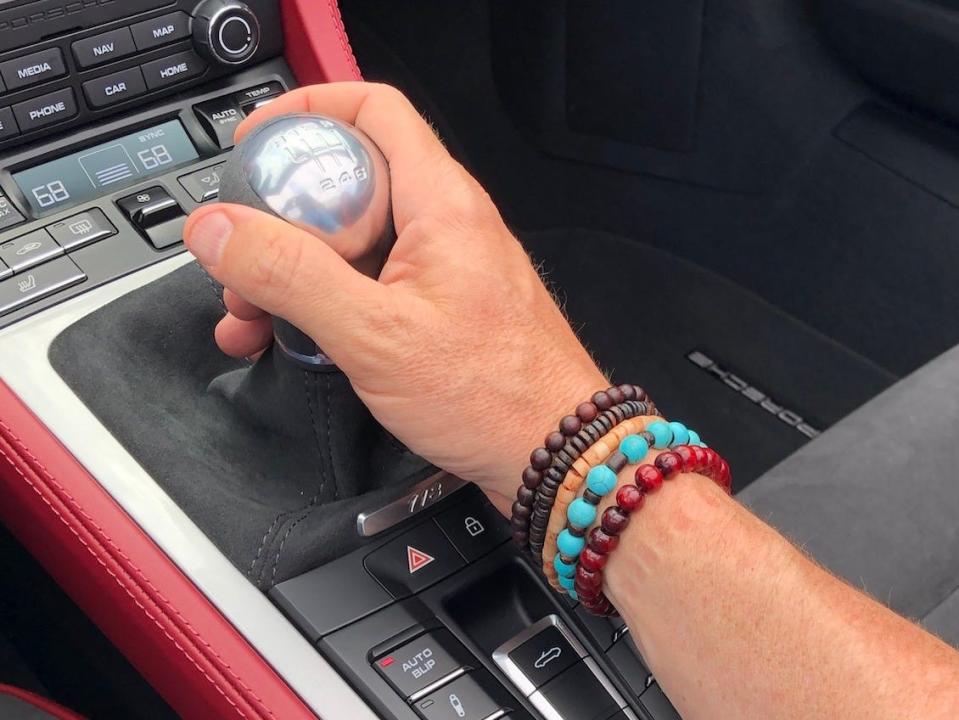
Matthew DeBord/Insider
As with the 911, it's impossible to gaze upon the Spyder's motor unless you're a qualified mechanic and are ready to dismantle the cowlings and covers. The 718's powerplant is even more concealed than the 911's, tucked away in the compact zone between seats and rear axle.
Shockingly, combined with the usual front trunk, the Spyder has a moderately ample cargo hold under the rear hatch. I was able to tote, at one point, a folding camp chair and a shipment of outdoor lights from Home Depot.
Versatility!
I'm not kidding. I think the Spyder, with its two seats, could haul more stuff than some smaller three-row SUVs, with the third row deployed. It didn't occur to me to investigate towing capacity.
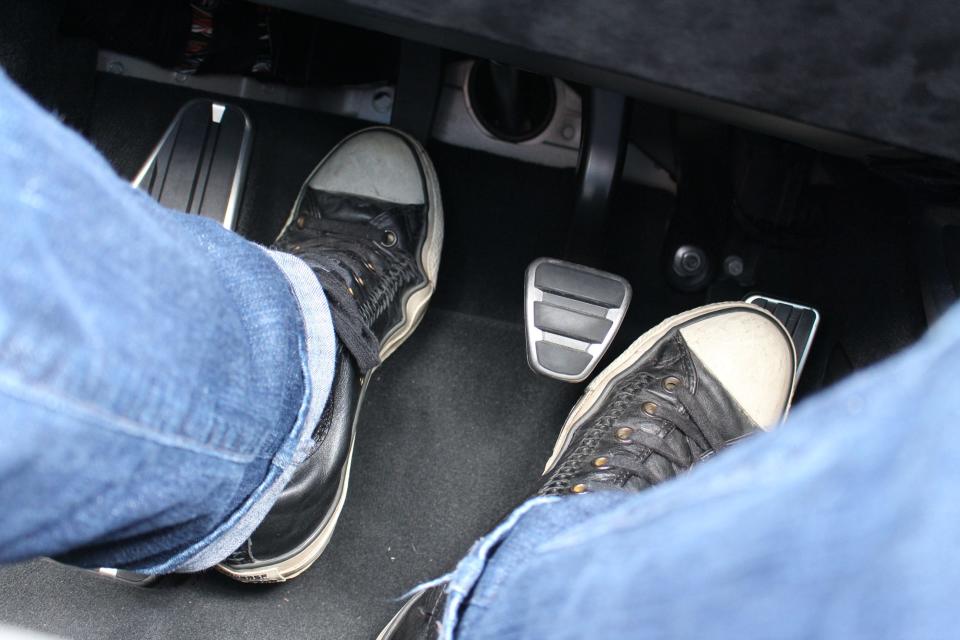
Matthew DeBord/Insider
Why do we even bother with manuals anymore? They're objectively slower than dual-clutch automatics and once you get over the thrills of blipping the throttle on your own downshifts, powering through the gears and launching off the clutch, and all that heel-toe tomfoolery if you get very, very motivated, they're hard to live with.
We bother with them on cars like the Spyder because there's no point of cars like the Spyder without a movable stick between the seats and a third pedal on the floor. Remember, I'm tearing that annoying cover out and going top-down forever. This is not my daily driver, and a pox on the commute. I'm on a hunt for curves and corners when I drive the 718, and I want to be in control of the show.
I could complain about the tricky shift into reverse: over to the left, hard, then up. But I won't.
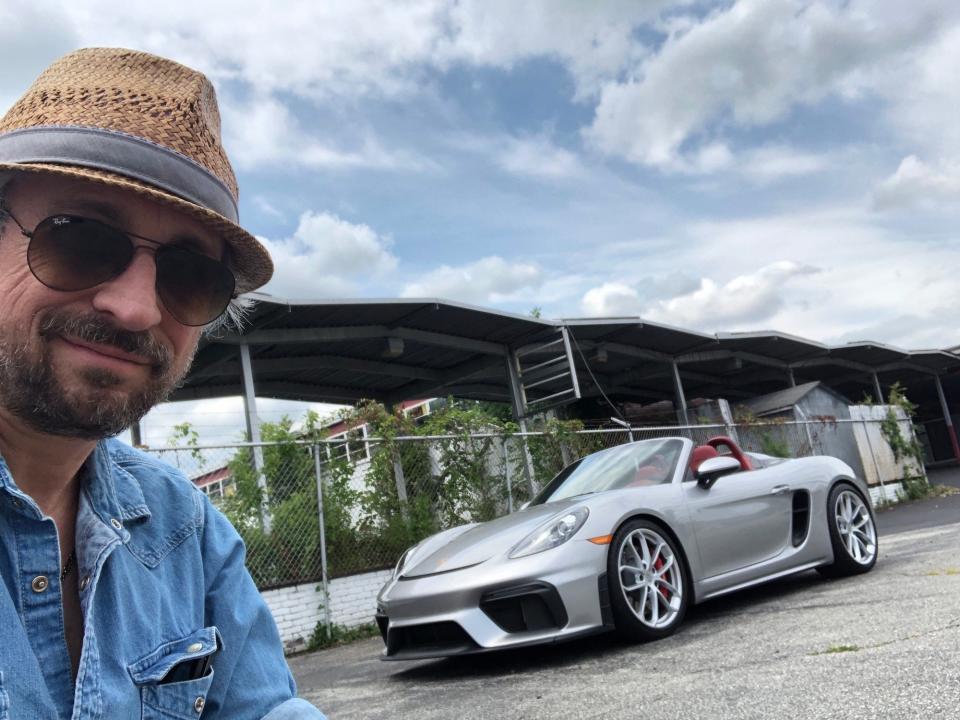
Matthew DeBord/Insider
The 718 Spyder is utterly mesmerizing. It's one of those cars that showed me colors I hadn't seen before, by which I mean ushered into my brainpan some new mixtures of the physical, intellectual, emotional, and psychological realms that had previously been concealed.
Top down and at speed, the car is a high-speed vision quest. The enlightenment it delivers is sadly ephemeral, but that just gives you excuse to strap in again and aim the nose back toward the open asphalt, with a mind freed to explore its corners thanks to stupendous German design and engineering.
The Spyder is the only Porsche I've driven in some time that has added up to far more than its impressive specs. A recent batch of new 911s confirmed for me the genius of that machine and Porsche's commitment to making it ever better. The Cayenne SUV remains as brilliant as it was in the early 2000s, when it stunned the world with its greatness. I've even found some Panameras I could live with.
But happiness, for me, is not now a warm puppy. Nor is it a walk on the wild side, nor a ride on a horse with no name. It's a Porsche Spyder. And I know where to find it.
Read the original article on Business Insider

